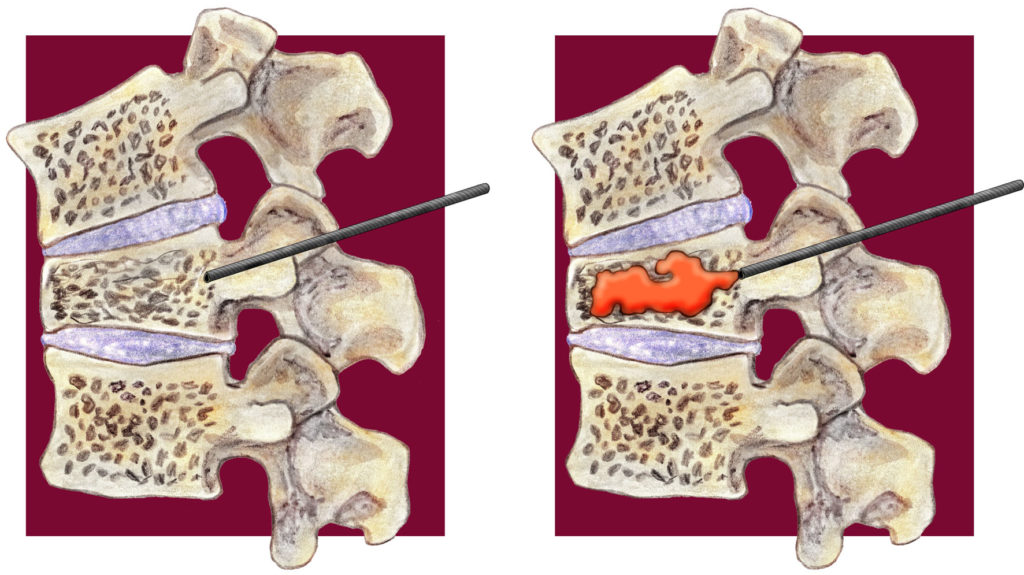
On 17 August, a multicentre, randomised, double-blind, placebo-controlled trial—the VAPOUR trial—was published online ahead of print in The Lancet. Six-month data from the trial provide the first sham-controlled evidence in support of using the procedure.
Data from VAPOUR (Safety and efficacy of vertebroplasty for acute painful osteoporotic fractures) show that vertebroplasty is more effective than placebo at reducing severe pain in patients with fresh osteoporotic spinal fractures of less than six weeks’ duration.
The trial randomised 120 patients with acute and severely painful vertebral compression fractures to either receive vertebroplasty, using an adequate vertebral fill technique, or a placebo treatment of simulated vertebroplasty. The primary outcome was the proportion of patients with Numeric Rated Scale (NRS) pain score of below four out of 10 at 14 days after intervention.
Results showed that 24 (44%) patients in the vertebroplasty group and 12 (21%) in the control group had an NRS pain score below four out of 10 at 14 days. The between-group difference was 23 percentage points (95% CI 6–39; p=0.011).
The mean pain score was found to be lower in the group of patients who received vertebroplasty at all time points that were followed up after the procedure. Other key findings from the trial were statistically signifcant reductions in disability questionnaire scores from one month to six months post-treatment in the vertebroplasty group; at least a 30% greater vertebral height preservation from six-month radiographs in the vertebroplasty group without increase in additional vertebral fractures; and subgroup analysis showing fractures in the thoracolumbar (T11 to L2) segment deriving the most benefit from vertebroplasty. The trial also showed that in inpatients (57% of the patients enrolled in this study), the median duration of hospital stay was reduced by 5.5 days in the vertebroplasty group.
Two previous randomised, sham-controlled trials (Kallmes et al and Buchbinder et al), published in the New England Journal of Medicine in 2009 called into question the efficacy of vertebroplasty over placebo. Later, other open-label randomised controlled trials that compared vertebroplasty to optimum medical management for osteoporotic fractures (Klazen et al) have shown statistically signi?cant bene?t from vertebroplasty.
An invited editorial accompanying the VAPOUR results in The Lancet by Joshua A Hirsch (Boston, USA) and Ronil V Chandra (Melbourne, Australia) refers to the initial enthusiasm for vertebroplasty being dampened after publication of the randomised controlled trials in the New England Journal of Medicine. Further, Hirsch et al clarify: “VAPOUR was different from other studies in a number of respects. First, VAPOUR included earlier treatment of vertebral compression fractures compared with previous masked randomised controlled trials, and focused on patients with severe pain (NRS ≥7). Second, the placebo group was different, and closer to a true sham procedure.”
In the previous masked randomised controlled trials, the sham procedure involved an active control, which could have provided pain relief for patients with more chronic fractures. VAPOUR used subcutaneous local anaesthetic infiltration followed by medical management, a comparator that is close to conservative therapy.
For an in-depth look at the VAPOUR results, read principal investigator, William Clark’s comment article here.












